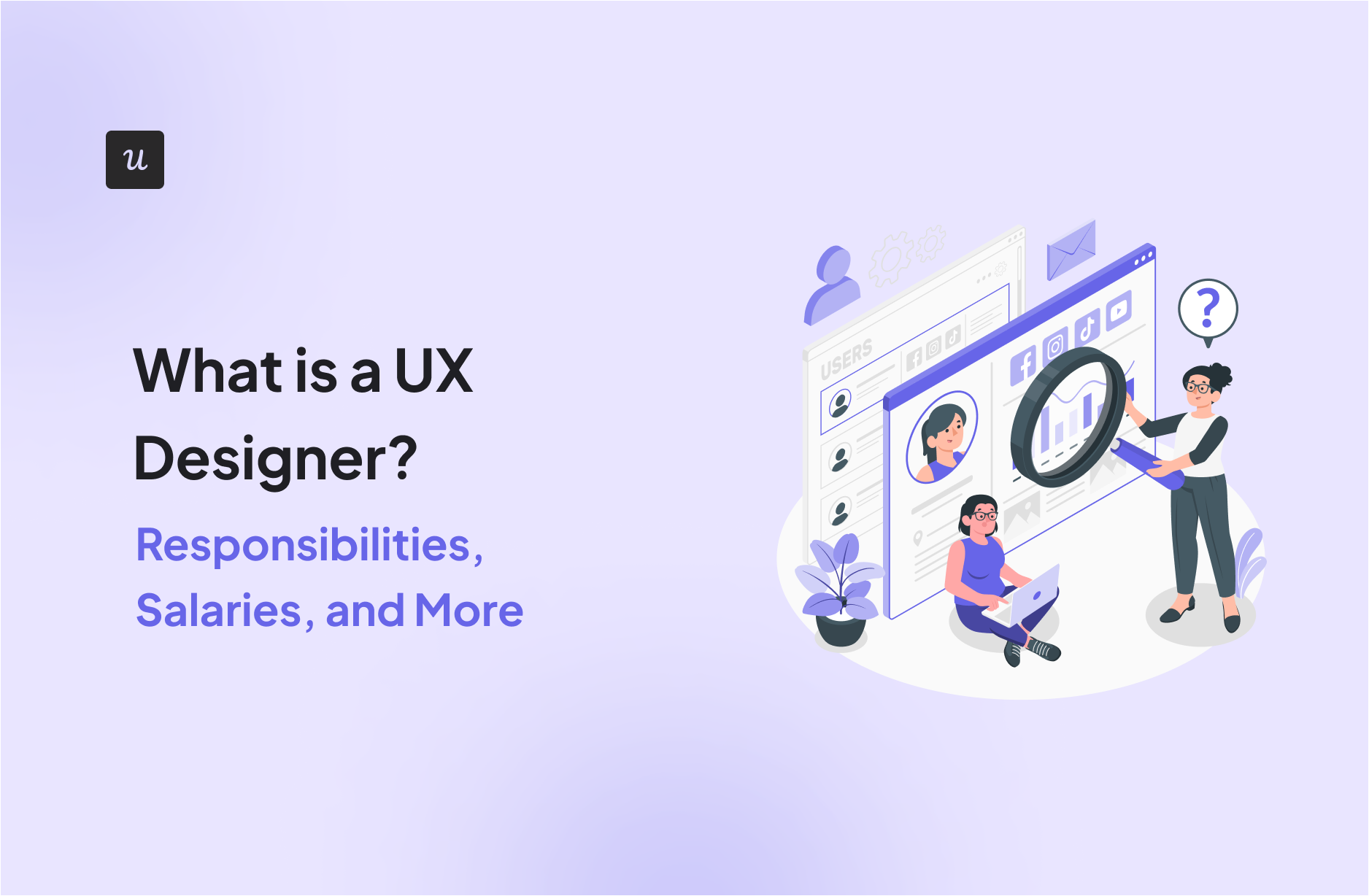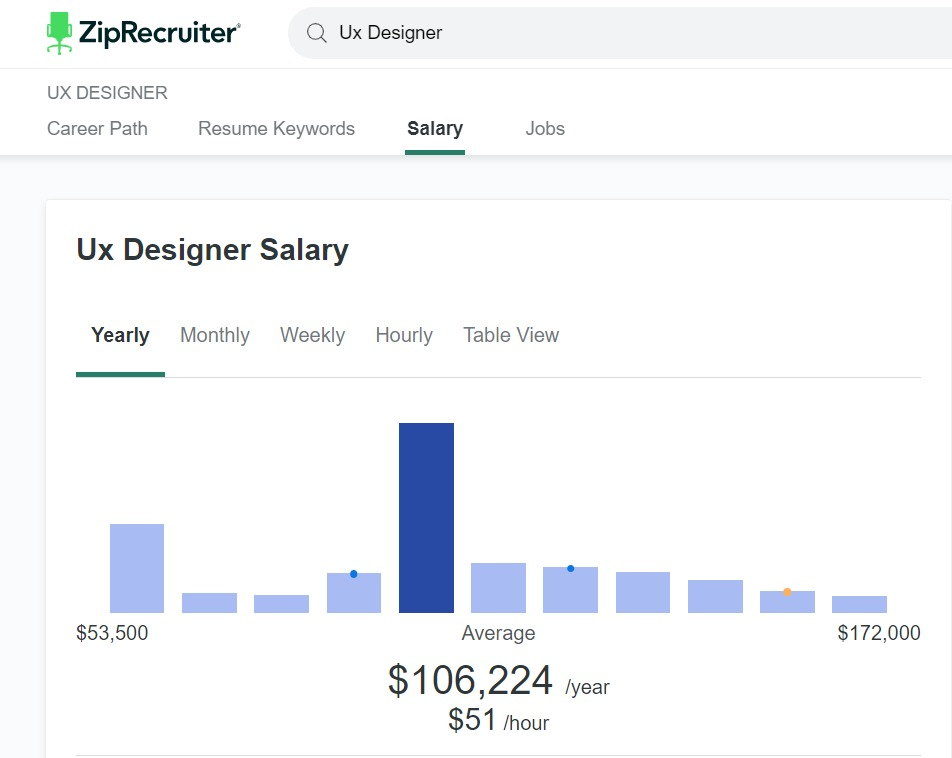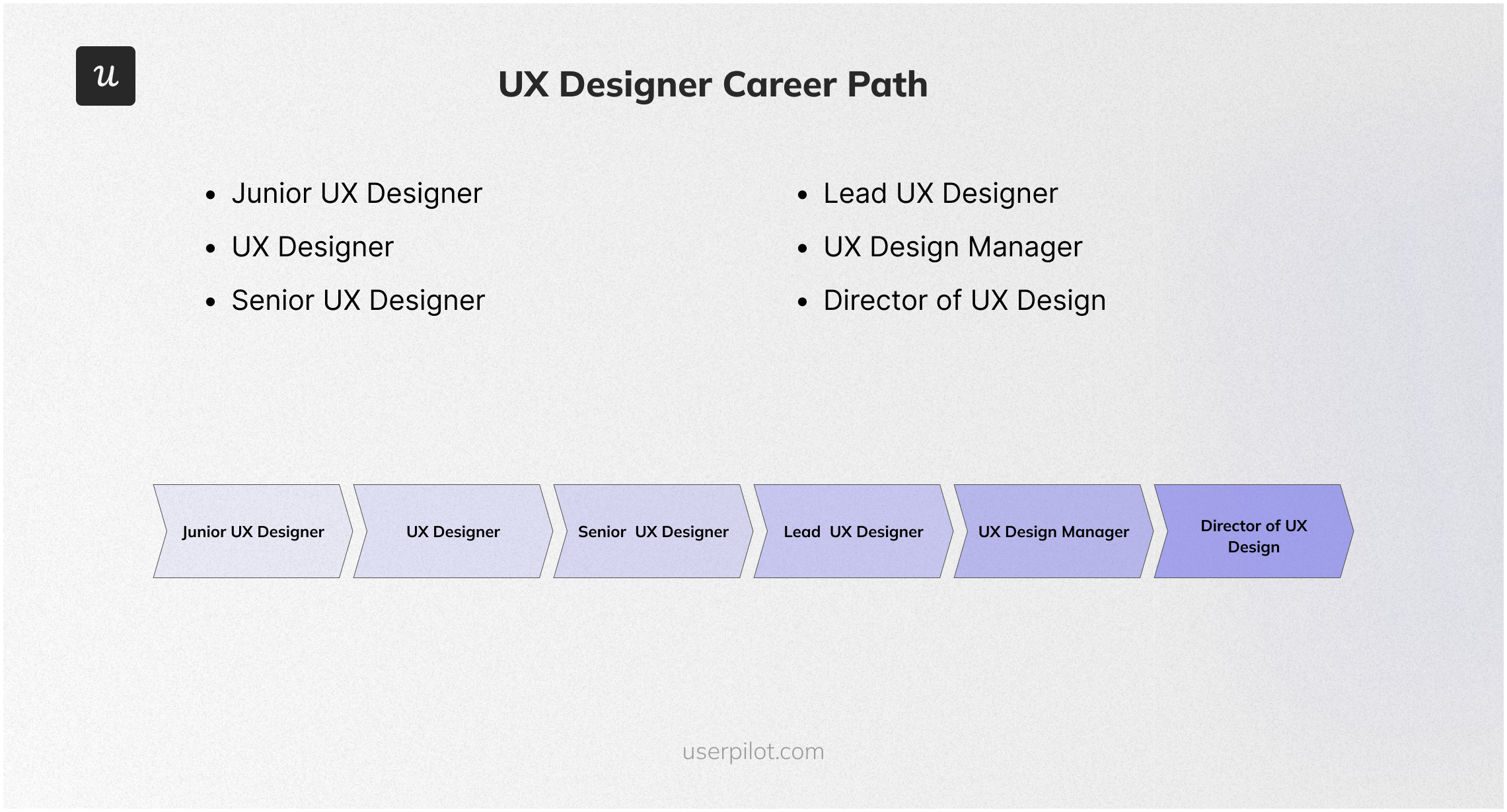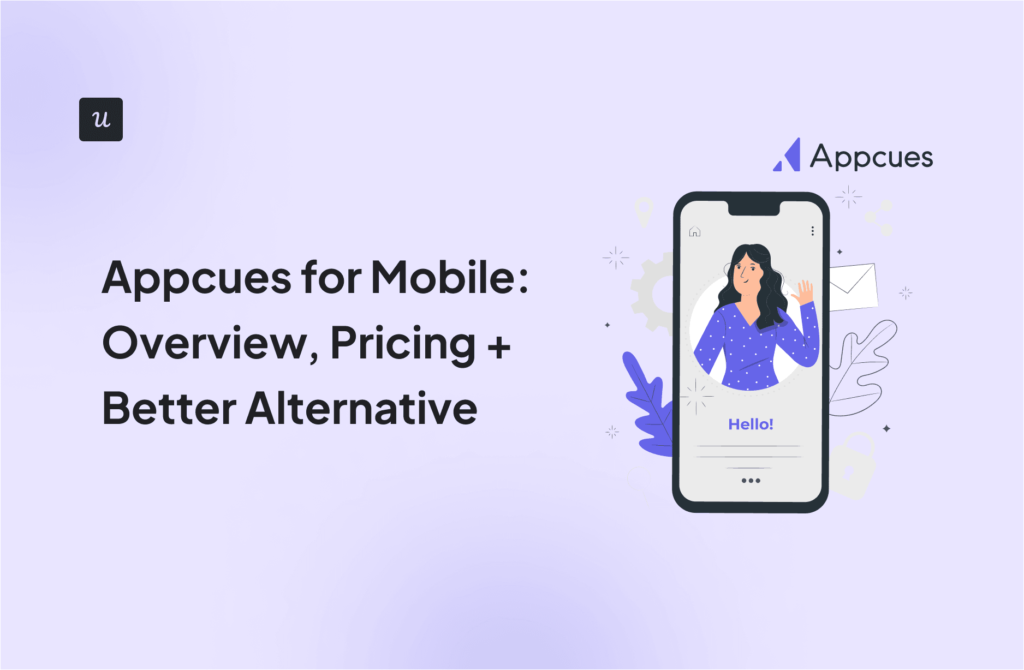
What is a UX Designer? Responsibilities, Salaries, and More6 min read
Get The Insights!
The fastest way to learn about Product Growth, Management & Trends.
What is a UX designer?
A UX designer, or User Experience Designer, focuses on enhancing user satisfaction by improving the usability, accessibility, and pleasure provided in the interaction between the user and the product.
In the SaaS industry, a UX Designer collaborates closely with product managers and developers to design intuitive interfaces that provide a seamless user experience, ultimately aiming to create products that are both functional and enjoyable to use.
What does a UX designer do?
A UX designer is responsible for creating user-friendly interfaces and enhancing user satisfaction by improving the usability, accessibility, and pleasure provided in the interaction between the user and the product.
They conduct user research, design wireframes and prototypes, and perform usability testing to ensure that the product meets user needs.
UX designers collaborate closely with product managers, developers, and other stakeholders to create intuitive and effective user experiences, ultimately aiming to make the product functional, engaging, and enjoyable to use.
UX designer’s main responsibilities
A UX designer is essential in the SaaS industry for creating intuitive and engaging user experiences. Here are the main responsibilities and duties of a UX designer:
- Conduct User Research: Perform user research to understand user needs, behaviors, and pain points through methods such as interviews, surveys, and usability testing.
- Create Wireframes and Prototypes: Design wireframes, mockups, and interactive prototypes to visualize design solutions and gather feedback from users and stakeholders.
- Design User Interfaces: Develop visually appealing and user-friendly interfaces that enhance the overall user experience and align with the product’s functionality.
- Collaborate with Teams: Work closely with product managers, developers, and other stakeholders to ensure that design solutions align with business goals and technical constraints.
- Perform Usability Testing: Conduct usability testing to identify issues, gather user feedback, and iterate on designs to improve functionality and user satisfaction.
- Maintain Design Systems: Create and manage design systems and style guides to ensure consistency across all products and maintain a cohesive user experience.
- Stay Updated with Trends: Keep abreast of the latest design trends, tools, and technologies to bring innovative ideas and solutions to the team.
- Document Design Processes: Maintain clear and comprehensive documentation of design processes, decisions, and guidelines to ensure transparency and consistency within the team.
These responsibilities ensure that a UX designer effectively contributes to the creation of user-centric SaaS products that meet both user and business needs.
UX designer salary
A career as a UX Designer can be financially rewarding, with salaries varying based on experience, location, and industry. Here’s a detailed breakdown:
Salary by Experience
- Entry-Level (0-2 years): $60,000 – $77,007 per year.
- Mid-Level (2-5 years): $74,000 – $122,000 per year.
- Senior UX Designer (5-10 years): $125,000 – $194,000 per year.
- Principal or Staff UX Designer (5-8 years): $175,000 – $261,000 per year.
- Director of UX Design (8+ years): $184,000 – $290,000 per year.
Salary by Location
- San Francisco, CA: $101,453 per year.
- New York, NY: $101,279 per year.
- Los Angeles, CA: $99,489 per year.
- Denver, CO: $93,253 per year.
- Seattle, WA: $92,376 per year.
- Houston, TX: $83,117 per year.
- Columbus, OH: $83,289 per year.
Salary by Industry
- Technology: Generally ranges from $92,000 to $146,000 per year.
- Finance: Typically between $86,000 and $134,000 annually.
- Healthcare: Often falls between $75,000 and $120,000 per year.
- Retail: Usually ranges from $70,000 to $110,000 annually.
Highest Paying Companies
- Google: $139,000 – $194,000 per year.
- LinkedIn: $115,000 – $220,000 per year.
- Meta (Facebook): $110,000 – $210,000 per year.
- Apple: $105,000 – $200,000 per year.
These figures highlight the lucrative nature of a career in UX design, especially within top tech companies and in major metropolitan areas.
UX designer career path
A career in UX design involves progressing through various roles, each with increasing responsibility and expertise.
Here’s a typical career progression for a UX Designer:
- Junior UX Designer: Focuses on learning design tools, assisting senior designers, and supporting user research efforts. To progress, build a strong portfolio, seek feedback, and gain practical experience through internships or entry-level positions.
- UX Designer: Conducts user research, creates wireframes and prototypes, and collaborates with cross-functional teams. To advance, take on more complex projects, refine your skills, and develop a deeper understanding of UX principles and methodologies.
- Senior UX Designer: Leads major design projects, mentors junior designers, and plays a key role in strategic planning. To progress, enhance leadership skills, contribute to creating design systems, and build strong relationships with product managers and developers.
- Lead UX Designer: Oversees the design team, ensures design consistency, and aligns design goals with business objectives. Develop project management skills, drive innovation within the team, and engage in high-level strategic planning.
- UX Design Manager: Manages the UX design team, coordinates design efforts across projects, and ensures alignment with overall business strategy. Enhance managerial skills, stay updated with industry trends, and focus on optimizing team performance and design processes.
- Director of UX Design: Sets the overall design strategy for the organization, collaborates with top executives, and ensures the design vision aligns with the company’s mission. Focus on strategic leadership, expand influence across departments, and drive the company’s design innovation.
Each step in this career path builds on the previous one, emphasizing continuous learning, leadership, and strategic thinking to progress to higher levels of responsibility and influence in the field of UX design.
Best practices for being a great UX designer
To excel as a UX designer, it’s essential to adopt practices that enhance creativity, collaboration, and user-centric design.
- Empathize with Users: Deeply understand users’ needs, pain points, and behaviors through thorough research. This helps create genuinely user-centric designs and solve real problems.
- Communicate Effectively: Articulate design ideas and research findings to team members and stakeholders. Good communication ensures alignment and facilitates collaboration.
- Iterate Based on Feedback: Embrace an iterative design process, using user feedback and testing results to refine and improve designs continuously.
- Stay Updated with Trends: Keep up with the latest design trends, tools, and technologies. Continuous learning brings fresh ideas and innovations to your projects.
- Focus on Usability: Prioritize creating intuitive and accessible designs. Conduct usability testing to identify issues and ensure the product is user-friendly and meets user expectations.
UX designer FAQs
- Is UX design an IT job? UX design is often considered part of the IT sector because it involves designing digital products and interfaces, but it primarily focuses on user experience and interaction rather than technical infrastructure.
- Is UX design like coding? No, UX design is not like coding. It focuses on user research, creating wireframes, and designing interfaces. However, a basic understanding of coding can be beneficial for communicating with developers.
- Is UX design a hard job? UX design can be challenging due to the need for strong analytical skills, creativity, and effective communication with cross-functional teams. It requires continuous learning and adaptation to user feedback and market trends.
- Is UX a graphic designer? No, UX designers focus on user experience and interaction design, while graphic designers primarily focus on visual elements like typography, color, and layout. However, both roles can overlap in areas such as UI design.
- Who is paid more UI or UX? Typically, UX designers are paid more than UI designers because their role encompasses a broader range of responsibilities, including user research, usability testing, and overall experience design.
Conclusion
We hope this guide has provided you with valuable insights into the roles, responsibilities, and rewards associated with this role.
Looking into tools for UX designers? Userpilot is an all-in-one product platform with engagement features and powerful analytics capabilities. Book a demo to see it in action!










